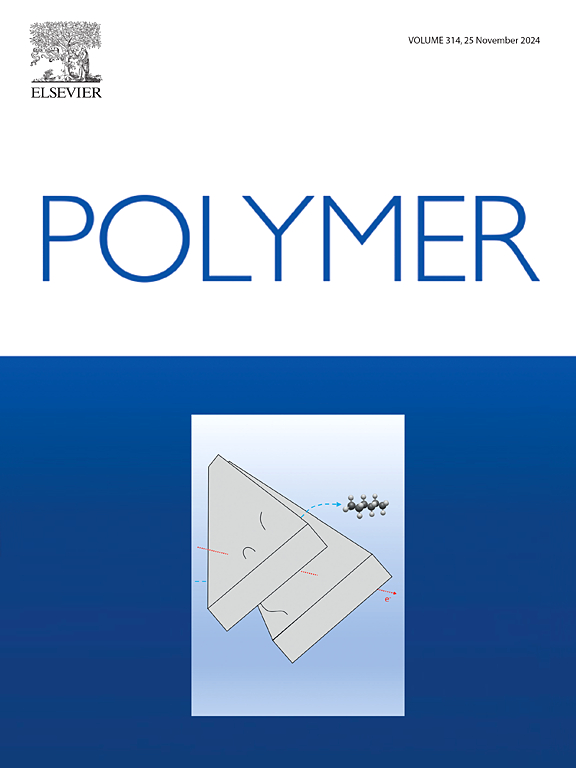Polymer extended-chain crystals: Preparation, formation mechanisms and performances
IF 4.1
2区 化学
Q2 POLYMER SCIENCE
引用次数: 0
Abstract
Polymer extended-chain crystals (ECCs) have garnered significant attention due to their exceptional thermodynamic stability, high melting temperatures, and superior mechanical and functional properties compared to folded-chain crystals (FCCs). This review systematically examines the preparation strategies, formation mechanisms, and performance characteristics of ECCs across various polymer systems. Key methodologies for ECC fabrication include crystallization during polymerization, high-pressure and high-temperature crystallization, shear-assisted crystallization, crystallization in Langmuir-Blodgett film. These approaches address critical challenges such as chain entanglement and entropy penalties, enabling the alignment of polymer chains into extended conformations. Notably, ECCs exhibit enhanced mechanical strength (e.g., ultrahigh-modulus polyethylene fibers), solvent resistance (e.g., poly(butylene succinate) ECC films), and electronic functionalities (e.g., piezoelectricity in poly(vinylidene fluoride) ECC specimens). However, achieving pure ECC structures under atmospheric pressure remains challenging due to kinetic limitations of ECCs and thermodynamic advantages of FCCs. Emerging strategies, such as inclusion complex templating crystallization, demonstrate potential for reducing processing constraints. The review also highlights specialized ECCs in conjugated polymers, cyclic polymers, and oligomers, emphasizing structure-property relationships. Despite advancements, scalability and energy-efficient production require further optimization. Future efforts should focus on elucidating nucleation kinetics, integrating multifunctional properties, and expanding applications in high-performance and versatile functional materials.


高分子延伸链晶体:制备、形成机制及性能
与折叠链晶体(FCCs)相比,聚合物展链晶体(ECCs)由于其优异的热力学稳定性、高熔融温度以及优越的机械和功能特性而引起了人们的广泛关注。本文系统地研究了各种聚合物体系中ECCs的制备策略、形成机制和性能特征。制备ECC的关键方法包括聚合结晶、高压和高温结晶、剪切辅助结晶、Langmuir-Blodgett薄膜结晶。这些方法解决了链缠结和熵惩罚等关键挑战,使聚合物链排列成扩展的构象。值得注意的是,ECC表现出增强的机械强度(例如,超高模量聚乙烯纤维),耐溶剂性(例如,聚(琥珀酸丁二烯)ECC薄膜)和电子功能(例如,聚(偏氟乙烯)ECC样品中的压电性)。然而,由于ECC的动力学限制和fcc的热力学优势,在常压下实现纯ECC结构仍然具有挑战性。新兴的策略,如包含复杂的模板结晶,展示了减少加工限制的潜力。该综述还重点介绍了共轭聚合物、环状聚合物和低聚物中特殊的ECCs,强调了结构-性能关系。尽管取得了进步,但可扩展性和节能生产需要进一步优化。未来的工作应集中在阐明成核动力学,整合多功能特性,扩大高性能和多功能功能材料的应用。
本文章由计算机程序翻译,如有差异,请以英文原文为准。
求助全文
约1分钟内获得全文
求助全文
来源期刊

Polymer
化学-高分子科学
CiteScore
7.90
自引率
8.70%
发文量
959
审稿时长
32 days
期刊介绍:
Polymer is an interdisciplinary journal dedicated to publishing innovative and significant advances in Polymer Physics, Chemistry and Technology. We welcome submissions on polymer hybrids, nanocomposites, characterisation and self-assembly. Polymer also publishes work on the technological application of polymers in energy and optoelectronics.
The main scope is covered but not limited to the following core areas:
Polymer Materials
Nanocomposites and hybrid nanomaterials
Polymer blends, films, fibres, networks and porous materials
Physical Characterization
Characterisation, modelling and simulation* of molecular and materials properties in bulk, solution, and thin films
Polymer Engineering
Advanced multiscale processing methods
Polymer Synthesis, Modification and Self-assembly
Including designer polymer architectures, mechanisms and kinetics, and supramolecular polymerization
Technological Applications
Polymers for energy generation and storage
Polymer membranes for separation technology
Polymers for opto- and microelectronics.
 求助内容:
求助内容: 应助结果提醒方式:
应助结果提醒方式:


